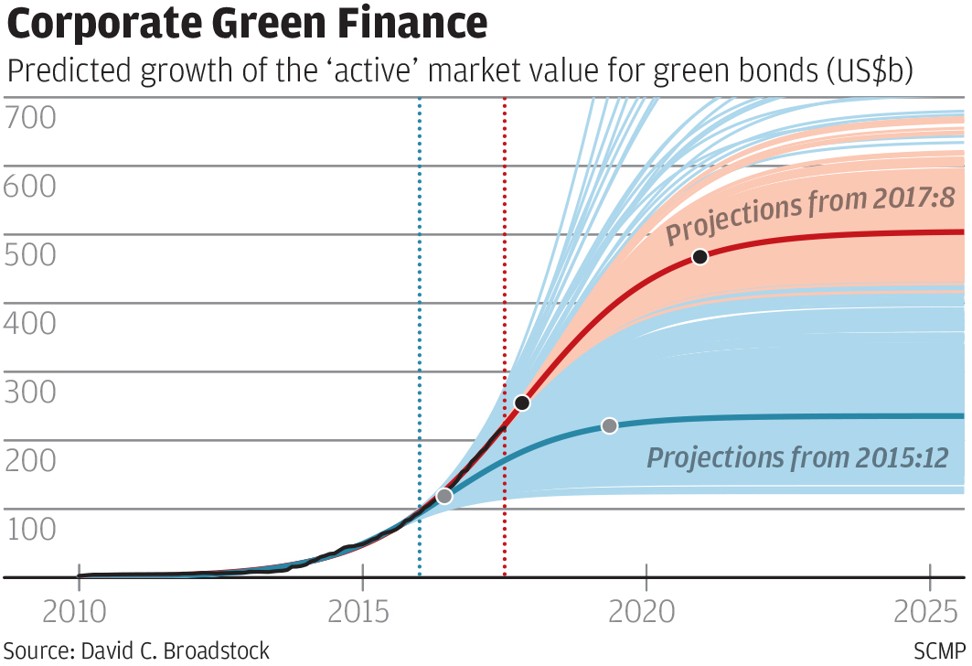
Green investment bank must for Hong Kong to maintain status as premier financial centre: European Chamber of Commerce
Emerging Asia needs US$26 trillion up to 2030 for climate friendly infrastructure projects, which a specialist institution based in the city could easily take advantage of
Setting up a green investment bank will allow Hong Kong to enter the rapidly growing finance sector and underpin the city’s competitiveness as a global financial centre, according to the European Chamber of Commerce in Hong Kong.
“The establishment of a Hong Kong green investment bank could position the city in the forefront of this vast, evolving area of finance in Asia,” said Ching Yng Choi, vice chairwoman of the European Chamber of Commerce in Hong Kong.
Green finance capitalises on opportunities created by the increasing convergence of economic and environmental factors driving global growth.
There are already 13 green banks globally, and Hong Kong is in a position to lead in this particular segment by creating a green bank that is aimed at mobilising private capital for low-carbon infrastructure in emerging markets in Asia, according to the Leading Asia’s financial future – Hong Kong green investment bank report.
Alexandra Tracy, lead author of the paper and president and founder of Hoi Ping Ventures, said that unlike a traditional bank, Hong Kong’s green bank will not take deposits, manage savings or provide direct financing to consumers. It will be a specialist institution which will use government resources to accelerate private funding of low carbon infrastructure.
Huge investments are still needed for power plants, water systems, roads and transport across the region. Asia Development Bank forecasts US$26 trillion is needed in emerging Asia, or nearly US$1.7 trillion a year, for climate friendly infrastructure up to 2030, as the investment trend shifts away from the old carbon-intensive economy and towards greener alternatives.
While governments cannot fund all this development, most private investors and banks also are not putting up capital into low carbon infrastructure now because they are unaware of the opportunities, or they do not have the skills, or the projects seem to be too risky, Tracy said.
So a green investment bank can provide education and technical assistance to the market about the opportunities, and also extend comfort on the project risks through financing tools and credit support, making the projects acceptable to private funders to enable their participation.
“Green banks are intended to be self-sustainable,” Tracy said.
For example, UK’s green investment bank that was set up in 2012, has attracted at least 3 pounds of private capital for every 1 pound it has invested. Since its inception the bank has been involved in nearly 100 projects. Besides, the government has privatised the bank, selling it to investment firm Macquarie Capital for 2.3 billion pounds and making a profit for tax payers.
“Green banks don’t subsidise green industries but seek to create a market that expands on its own,” Tracy said.


